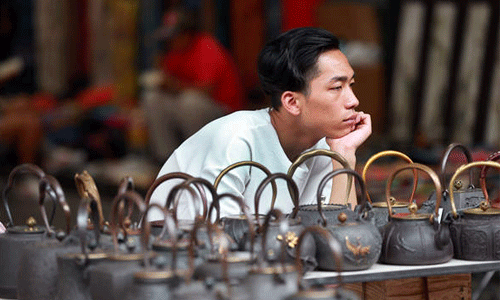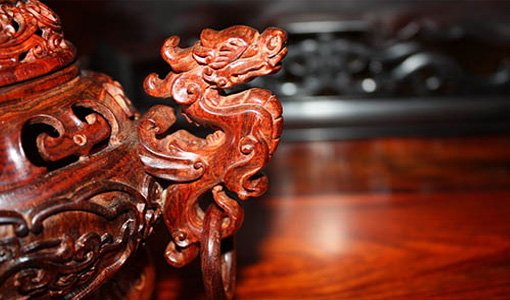Nanaholy offers both furniture and culture
Buying a piece of furniture from Nanaholy comes with a free history lesson.

(Editor: Leona)
Buying a piece of furniture from Nanaholy comes with a free history lesson
Jin Zhangxi, the chairman of Nanaholy Furniture Group, likes to think he offers his customers something a little special. The items he sells are not just pieces of furniture, he says, they are cultural symbols.
Based in Yiwu, a city in Zhejiang province, Nanaholy is China's largest rosewood furniture manufacturer in terms of output value.
It employs more than 200 highly experienced designers and 400 technicians, and is considered both the country's largest manufacturer of Chinese-style furniture but also its most sophisticated in terms of research and development into what it considers is a centuriesold tradition.
In 2013, the company's total output reached more 1.5 billion yuan ($240 million), an 18 percent annual increase.
Apart from supplying the domestic market, the company sells to Southeast Asia, Japan, South Korea, Europe and the United States. It claims to be able to provide more than 1,000 different products, aimed at both high-end and low-end customers.
Jin says, however, that although the company has become the largest in China, he is still not satisfied with its achievements.
"We are still at the stage of merely selling products. But to progress, we have to promote the company more as a cultural enterprise," he says.
"After all, many manufacturing industries inevitably die over several generations, but the cultural industry will last forever," he says.
Since 2008 the company has spent more than 4 million yuan on R&D because it believes that Chinese-style furniture is an integral part of the country's culture.
"Our ancestors have left us a great legacy," Jin says.
"The dragon carvings on furniture, for example, carry many different meanings: the number of toes the dragon has, the direction of their tails, even the clouds around their heads-they all have significance."
He remembers driving 1,000 kilometers to meet one rather special technician.
"He was 76 at that time and was the only person in China who could carve certain patterns on rosewood which had previously been applied only to furniture owned by royal families," he says.
Paying him 100,000 yuan a year, Jin then sent all his technicians to learn from the master.
"I viewed that more like preserving a technique than employing a person. I did it so that more Chinese people could continue to enjoy the legacies our ancestors left us," he says.
Nanaholy's head office in Yiwu has a permanent exhibition hall packed with an exquisite collection of rosewood furniture, the oldest dating back to the Ming Dynasty (1368-1644).
It also offers presentations to visitors on the different varieties of rosewood, the history of rosewood furniture making in China, and the ways of identifying an authentic from a fake.
The hall is open to tourists for free and offers souvenirs to those who cannot afford large pieces of rosewood furniture.
"Call it a promotional strategy if you like, but the exhibition helps boost our sales because people are getting to know the history behind our products," he says.
In 2010, Jin also invested 5 billion yuan to establish a rosewood-themed cultural park in Longyou, Zhejiang province, which is expected to be completed by 2018.
"Our target is to attract three million visitors, provide Chinese cultural courses to 50,000 people, as well as furniture and souvenirs worth 2 billion yuan by 2020," he says.
But more than anything else, he says, the park is about underlining the cultural values of the rosewood industry.
"People will be willing to pay higher for what we and others sell if they really appreciate the stories behind them."




 沪公网安备31010402003309号
沪公网安备31010402003309号



